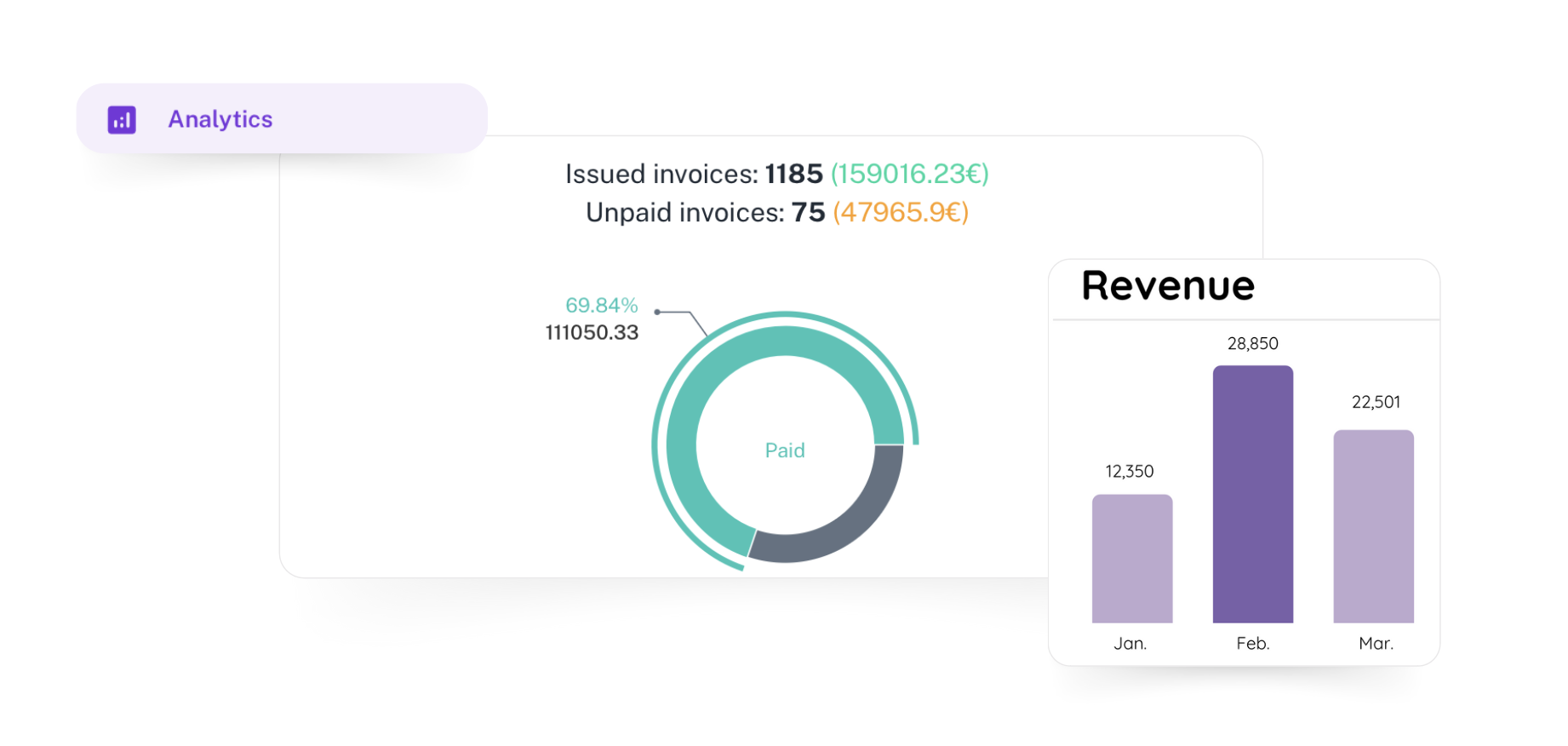After-school clubs are no longer just a childcare option — they have become learning environments that meaningfully contribute to children’s emotional, social, and academic development. International research shows that high-quality after-school activities improve confidence, collaboration, motivation to learn, and even school attendance. That’s why studios aiming for professional operations and consistent after-school club growth can’t rely solely on group occupancy or registration numbers.
In modern practice, KPIs act as the backbone of a studio’s operations. They help you understand whether your program is creating real impact, whether your processes run smoothly, whether your team is delivering quality, and whether your after-school program finances are stable. KPIs aren’t “just numbers” — they are a tool for self-evaluation and a foundation for strategic, data-driven after-school club growth.
Below, we explore the most important KPI groups based on international quality standards and real-world insights from after-school programs.
The heart of any after-school program is not the number of registrations or revenue — it’s what children actually experience. How do they feel emotionally? Are they learning to collaborate? Are they building confidence? Are they excited to return? These questions define the real value of your club. That’s why progress and impact KPIs are essential for sustainable operations and long-term after-school club growth.
High-quality studios around the world regularly measure children’s emotional and social development, because these factors strongly influence the club’s reputation and family trust. When a child feels good, returns with enthusiasm, and sees personal improvement, parents notice. This directly increases registration conversion, reduces churn, and drives meaningful after-school club growth — the kind that creates long-term stability rather than short-lived spikes.
Key KPIs in this category:
✔ Attendance consistency
Consistent attendance is one of the clearest indicators of program appeal. Children who attend regularly feel safe, find their place in the group, and see value in the activity. Fluctuating attendance often signals obstacles — declining motivation, schedule conflicts, or negative social experiences. Tracking this KPI helps studios identify trends early and make informed decisions.

✔ Engagement
Engagement goes far beyond simply showing up — it reflects enthusiasm, participation, and curiosity. Engaged children practice more, express themselves freely, collaborate with others, and show a genuine desire to improve. Strong engagement is closely tied to long-term participation and has a direct influence on after-school program finances, as engaged families are more likely to stay season after season.
✔ Churn: why do students leave the program?
Understanding churn is one of the most important signals for identifying program challenges. The most common reasons include:
Churn directly affects both after-school program finances and program stability. It should never be viewed as “losing a customer,” but rather as feedback on what can be improved.
✔ Retention rate
This is one of the most accurate indicators of program quality. When children stay, it means the program is valuable, they feel good, and parents see ongoing progress. A high retention rate is one of the strongest predictors of sustainable after-school club growth, because stable groups allow studios to plan teacher workloads, maintain consistent quality, and forecast revenue more accurately.
The retention rate is closely connected to every other KPI — engagement, satisfaction, attendance — which is why it should be one of the first metrics tracked by any modern after-school club system.
While teaching quality is always the priority, the success of an after-school club also depends on how efficiently its daily operations run. Even the best-designed program can lose value if registration is confusing, class planning is chaotic, or parents face unclear communication. This is where operational KPIs become irreplaceable: they allow you to measure real efficiency and identify problem areas long before they turn into real challenges.
✔ Registration conversion: how many potential families actually enroll?
Registration conversion is one of the clearest indicators of how easy — or difficult — it is for parents to join your program. Sometimes a single obstacle is enough: too many form fields, a complicated payment step, or unclear information. Any of these can cause parents to abandon the process entirely. This directly affects both your after-school program finances and your seasonal planning.

A strong conversion rate shows that your after-school club system is designed in a way that allows parents to make decisions quickly — a crucial foundation for stable class groups and sustainable after-school club growth.
✔ Class capacity utilization: are you using all available resources effectively?
Class capacity utilization helps you understand how efficiently your studio uses its resources. If one group has a waitlist while another has empty spots, this signals a need to adjust schedules, redistribute teacher workload, or optimize time slots. This KPI is essential for managing seasonality and maintaining steady revenue flow.
High capacity utilization means your studio is planning strategically, making data-driven decisions, and optimizing operations effectively — all of which directly contribute to long-term after-school club growth.
✔ Operational foundation: the invisible structure that keeps your studio stable
A strong operational foundation not only simplifies day-to-day processes but also creates long-term stability for your after-school program finances. When registration, payments, schedules, and communication all function in one place, your team can focus on what truly matters: supporting children, communicating with families, and delivering high-quality programs — instead of constantly fixing mismatched data across multiple tools.
This is where after-school club analytics becomes critical. It allows you to see not only current occupancy but also long-term trends, seasonal peaks, the most popular activities, and realistic growth potential for future seasons. Such analysis is essential for staying competitive, planning sustainably, and ensuring consistent after-school club growth year after year.
A sustainable studio can’t rely solely on a strong educational program — it needs a stable financial foundation that is clear, consistently monitored, and easy to predict. Even the highest-quality teaching cannot compensate for chaotic payment processes, inaccurate revenue analysis, or poorly planned pricing models. That’s why financial KPIs are one of the core pillars of after-school success and long-term after-school club growth.
When a studio consistently reviews its financial indicators, it gains visibility into seasonal patterns, pricing effectiveness, true service costs, and return on investment. This becomes the basis not just for surviving, but for thriving — expanding programs, hiring more instructors, enhancing materials, and continually improving the student experience. In this area, after-school club analytics becomes essential, enabling real-time visibility into the metrics that matter and allowing studios to respond quickly to changes.
Image alt text: EXOCLASS after-school club system that helps studios monitor key operational and financial data — from registrations to payments and class capacity.
Key financial KPIs:
✔ MRR – Monthly Recurring Revenue.
MRR shows how consistently your studio generates revenue each month. It is one of the most reliable indicators for forecasting future finances, planning expansion, and evaluating long-term program sustainability. A strong MRR means the studio can invest in quality and operate with confidence throughout the season.
✔ On-time payment rate
This KPI reflects how stable and reliable your payment processes are. A high volume of late payments directly reduces cash flow and complicates planning. When payments are automated and reminders are sent at the right time, this indicator improves significantly — positively influencing your overall after-school program finances.
✔ Revenue per student
This KPI helps assess how efficiently the studio is operating and whether program pricing aligns with delivered value. It also helps identify which plans or activity types generate the highest return and where there are opportunities to optimize pricing models.
✔ Revenue per class or per instructor
This indicator is essential for strategic planning. It clearly shows which classes are financially sustainable, which ones drain resources, and how effectively instructor time is allocated. It is one of the best tools for making decisions about scheduling, group formation, and program expansion.

✔ Program profitability
Profitability is the true measure of sustainability. If profitability is low, a studio may struggle even with strong enrollment numbers. If profitability is healthy, the studio can make long-term investments, improve quality, and consistently increase its value to families. Profitability analysis helps identify where resources are being spent and how to optimize them without sacrificing program quality.
One of the biggest challenges in after-school programs is that data exists — but it doesn’t actually answer the questions that matter. Without a consistent system, it’s extremely difficult to understand why some groups thrive while others struggle. Why registrations rise one year and drop the next. Why certain age groups experience higher churn while others remain remarkably stable.
Centralized after-school club analytics reveal not just the current situation but the underlying patterns:
These questions are not just informational — they have a direct impact on after-school program finances and the studio’s entire planning process.
EXOCLASS provides visibility into every key metric
EXOCLASS allows you to track:
By combining all this information, EXOCLASS becomes not just an administrative tool, but a strategic analytics platform that supports smarter decisions about the future. This level of insight is essential for planning new groups, optimizing schedules, improving the student experience, and ensuring stable after-school club growth.
Ultimately, the quality and accessibility of data determine how quickly and sustainably a studio can grow. A studio that understands what is happening inside its programs can respond faster, adjust more precisely, and improve more effectively. This allows you not only to solve problems as they arise — but to anticipate opportunities long before they become obvious.
In this way, EXOCLASS becomes a cornerstone tool that drives consistent after-school club growth, improves program sustainability, and elevates the experience for children, families, and your team.
Discover real studios that achieved measurable growth with EXOCLASS — read their stories here.
If you’d like to see how a data-driven system can transform your studio’s daily operations and accelerate growth, reserve a demo — we’ll walk you through real examples.